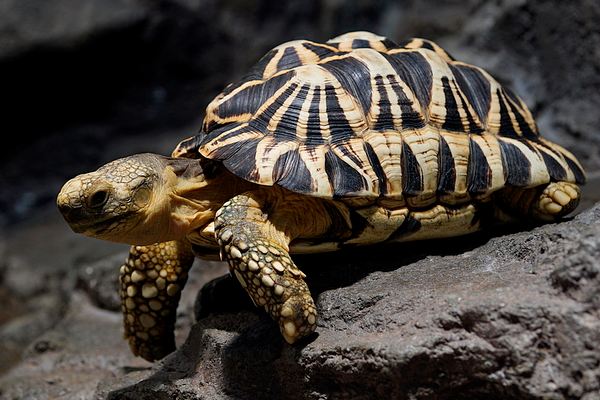Lonesome George, Last of his Tortoise Kind, Continuing on as Taxidermy
Lonesome George, strolling in his native Galapagos. (photograph by Pete Oxford, via National Geographic)
On June 24, 2012, Lonesome George, the giant Pinta Island tortoise, was found dead by his caretaker in the Darwin Research Foundation on Santa Cruz Island. It was a tragic loss, not only because our slow-motion friend reached almost a century old, but with his demise, all of his subspecies was officially pronounced “Functionally Extinct.” While holding their breath until this dreaded day, the Foundation had made several attempts to mate George with two other females, but the eggs failed to hatched.
Upon his death, a panicked effort was put together by Eleanor Sterling of the American Museum of Natural History with local teams to preserve the giant tortoise’s remains from putrefaction and therefore the loss of this last specimen forever. Unfortunately the island was pretty isolated and our scientists met many difficulties in finding freezer plastic to save George from decay. Luckily, a big wave of local solidarity and few ice packs later, disaster was avoided. George’s vulnerable body was safely frozen and ready to cross the ocean to meet his new destiny.
Casts of Lonesome George prepared by taxidermist George Dante and his team. ( via New Jersey News )
After a short stopover in the American Museum of Natural History in New York for inspection, Lonesome George traveled to Woodland Park, New Jersey, to the studio of George Dante, expert taxidermist. George was cast and skinned while Dante’s team realized a sculpted form with which to perfectly render the tortoise structure. Dante also consulted the Galapagos Conservancy to choose which position our centenarian fellow should be immortalized in, a position that will in a way keep a record of his facial expression and motor behaviour. As Dante said to Scientific American: “We’re leaning towards a very regal walking pose, with his neck extended.”
Taking measurements of Lonesome George as the team begins the process of making a taxidermy mount from his remains. (via Live Science)
The taxidermy process is still ongoing and will reach its final phase in winter or spring of 2014. After being displayed in the American Museum of Natural History, George will head back to his homeland, The Galapagos Islands. Once known as “the rarest living creature in the world,” Lonesome George’s death gave extinction a face. He will continue living as an iconic figure of the conservation world, a powerful symbol of scientific effort to save endangered species from oblivion.








Follow us on Twitter to get the latest on the world's hidden wonders.
Like us on Facebook to get the latest on the world's hidden wonders.
Follow us on Twitter Like us on Facebook